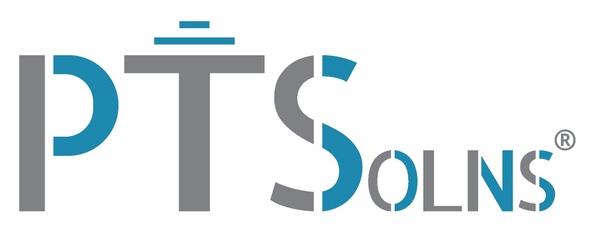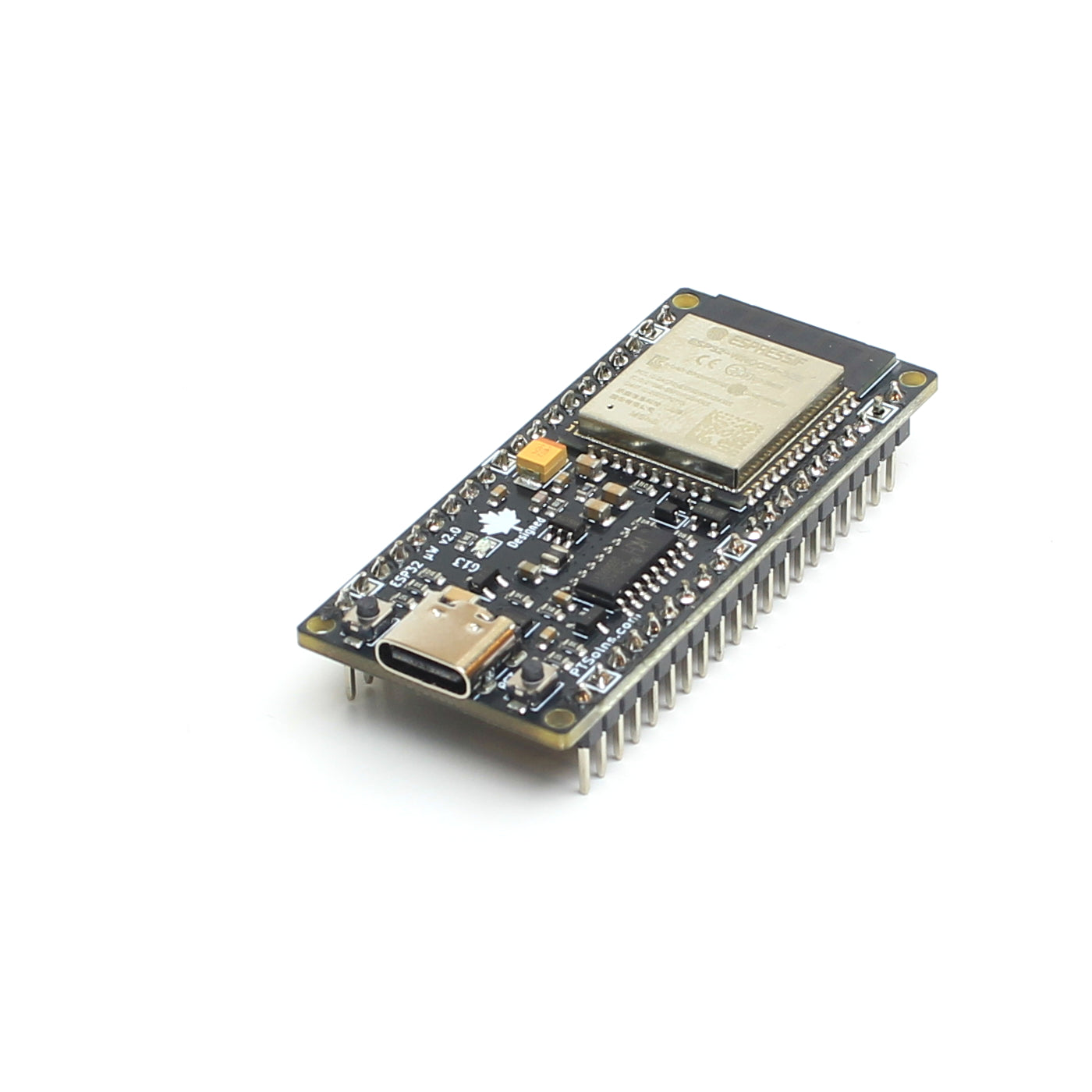
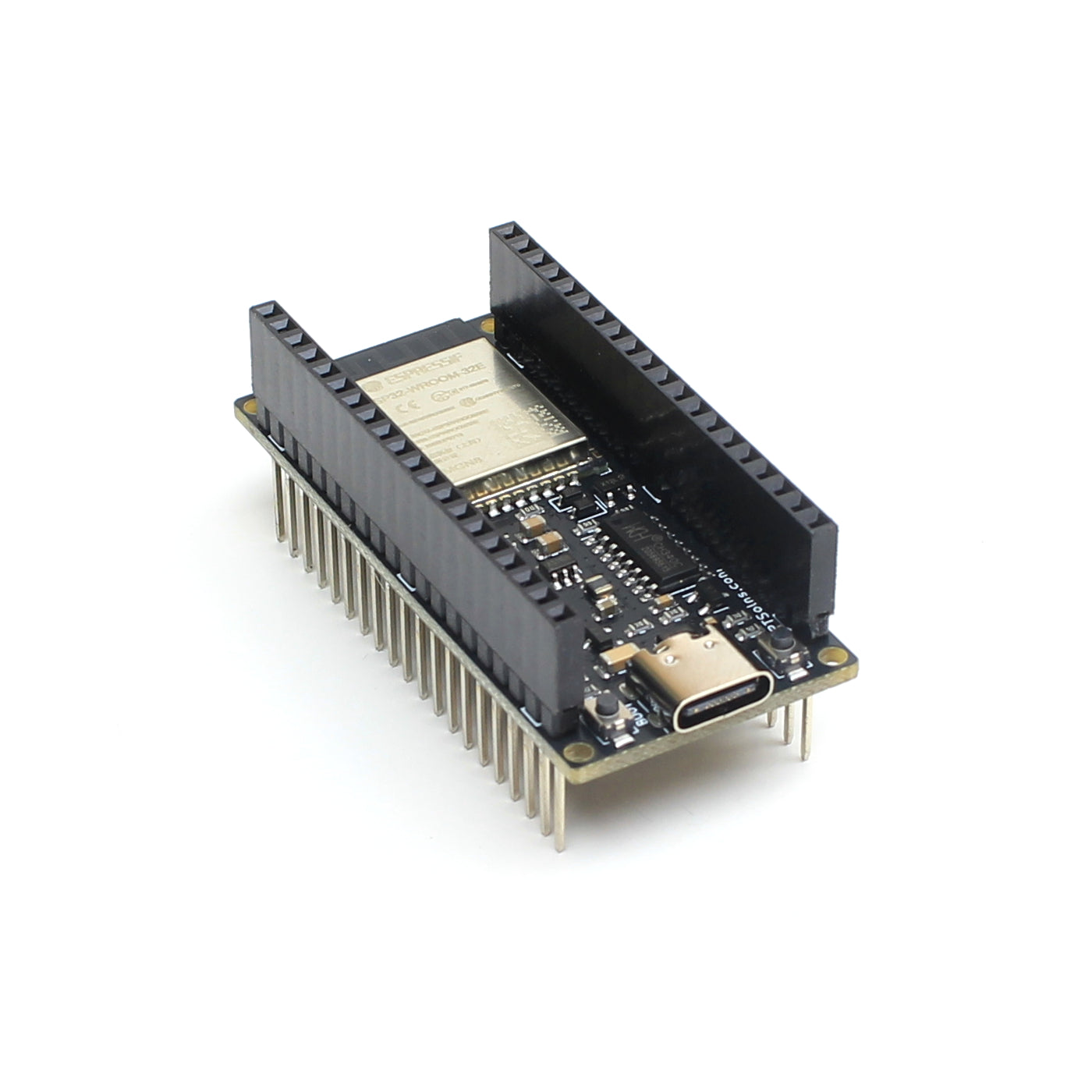
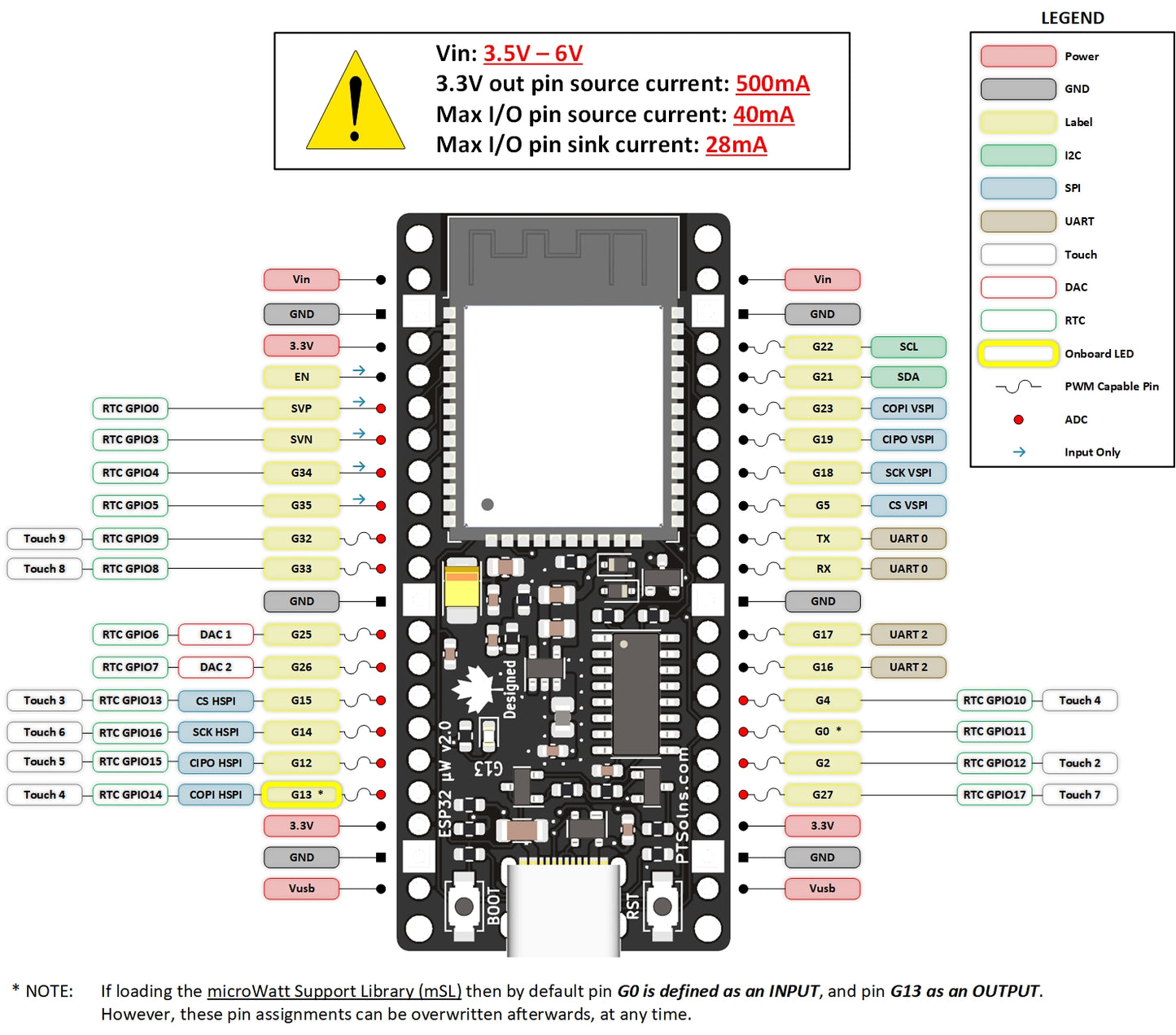
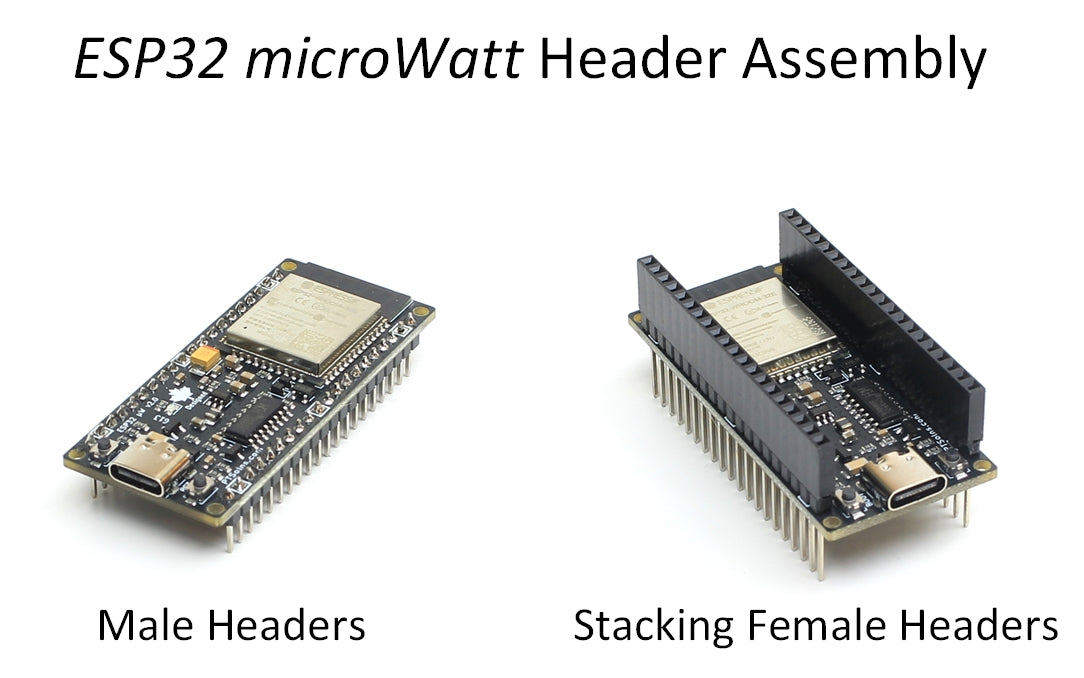
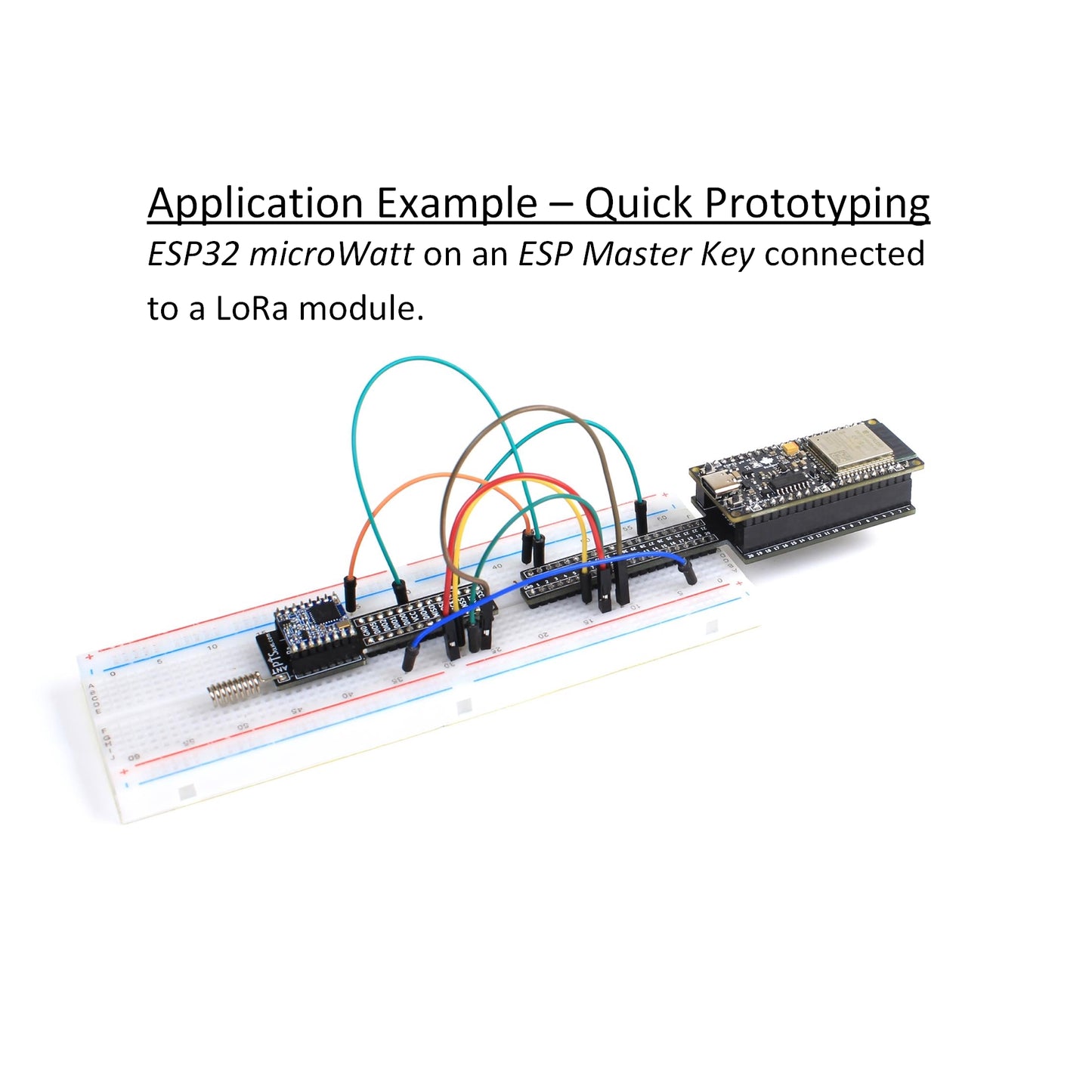
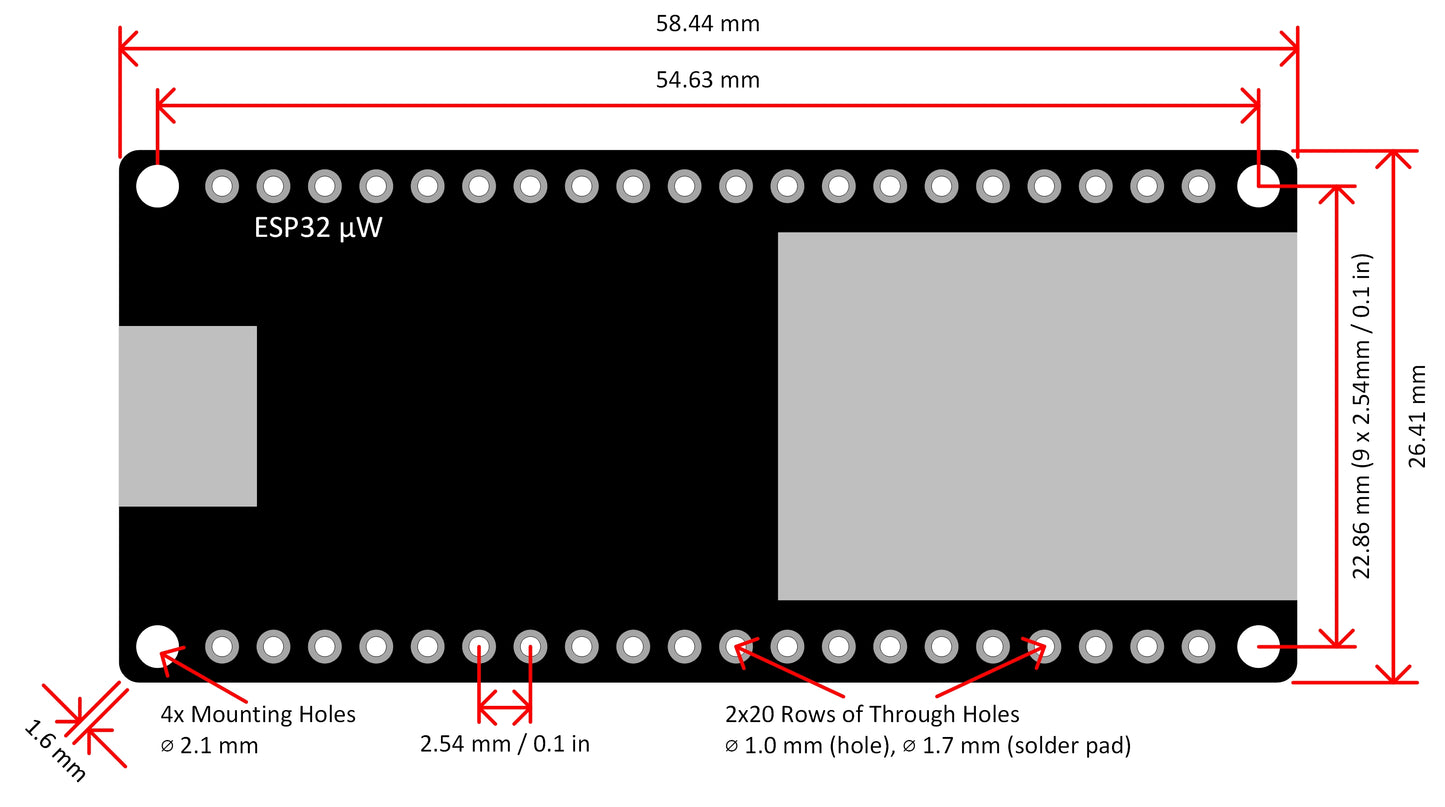
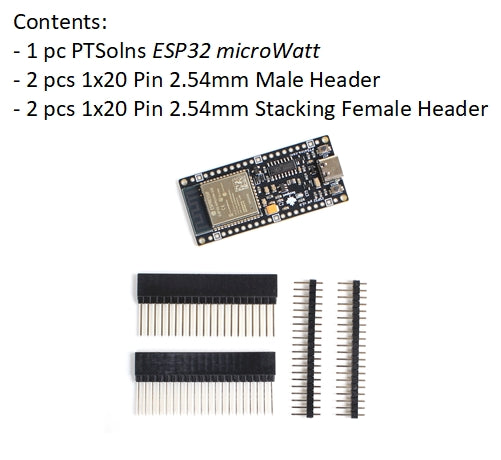
Product Description

The PTSolns ESP32 microWatt is a low power development board specifically designed for IoT (Internet-of-Things) and related applications. Equipped with both Wi-Fi® and Bluetooth® LE capabilities facilitated by an embedded ESP32 module. The board can be powered through either USB-C® or an external voltage input ranging from 3.5V to 6.0V, rendering it particularly suitable for single-cell 3.7V/4.2V LiPo battery applications.
The ESP32 microWatt has an intuitive pinout, collecting like pins in groups such as the I2C and SPI pins. Packed with many unique features, this development board is ideal for hobbyists, educators and professionals for prototyping and testing their projects.
The microWatt Support Library (mSL) helps novice users with various tasks and provides important product information. The mSL combined with a collection of supporting material relating to ESP32 development and reduces the barrier-to-entry into the world of IoT development.
The ESP32 microWatt is part of the microWatt family, which consists of several products designed to work together. These products, when combined offer additional features such as LiPo charging via PV solar, long distance communication, and custom prototyping.
microWatt Family
This product is part of the microWatt Family. All the members of this series include:
- ESP32 microWatt (this product page)
- microWatt Proto
- microWatt LoRa ... coming soon
- microWatt Charger ... coming soon
Extremely Low Power

Versatile and Compatible

This is one of many countless example applications of the ESP32 microWatt microcontroller development board. In this example the board is connected to a LoRa Module. Since both the ESP32 microWatt and the LoRa module operate on 3.3V, there is no need for any logic-level shifters and the logic signals from one to the other can be made directly. For quick prototyping the ESP Master Key and the LoRa Key are used on a standard breadboard.
ESP32 microWatt Header Assembly

The ESP32 microWatt microcontroller development board does not come assembled with headers. This is because the user can choose which headers they require in their application. Each product page contains a full set of male headers and stacking female headers.
Stack it any way you like

[Left image] Choose this option when you need more prototyping space.
[Centre image] Choose this option when you don't want to use the stacking female headers on the ESP32 microWatt.
[Right image] Choose this option when you have large profile components that need to be soldered onto the microWatt Proto board.
Compliance

- FCC
- IC / ISED
- RoHS3
Other Names
- ESP32 microWatt
- ESP32 Dev Board
- PTS-00165-111
- PTS-00165-211

